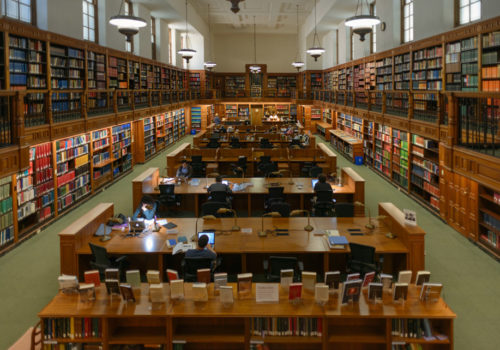Without much public attention, a remarkable thing is happening. As libraries around the world digitize their photographic collections they lose the funding to store their physical archives. Only a handful of libraries have the resources to store, catalog and maintain these irreplaceable images and the Huntington Library is one. Located in San Marino, California, The Huntington is a leading research library with a collection of over a million images, many dating back to the late eighteen hundreds. There are images of every kind spanning the nineteenth to the twenty-first century. Because the Huntington is a research library most people will never see more than a fraction of their collection but for those who have the opportunity to study here the depth and breadth of the collection is astonishing. I spoke with Jennifer A. Watts, Curator of Photographs to get some idea of the scope of the collection and the things people use it for.
Andy Romanoff : Tell me a little about the Huntington archives
Jennifer A. Watts :The collection consists of about a million images and the geographic focus is California and the American West, with outlying subject strengths such as the American Civil War. The collections range from the beginning of photography to the present but the sweet spot is from about the 1860s to the 1950s.
A.R : How much of the collection is visible to the casual visitor?
J.W : Well very little at present. We are a private, collections-based research institution where people traditionally have come on site to conduct primary research. We mostly serve scholars associated with universities and colleges or independent scholars working on books. To a lesser extent there are documentary filmmakers and we mount exhibitions as well.
A.R : How much of the collection is visible online?
J.W : Considering the size of the collection, a small percentage. The Huntington — being first and foremost a research library –is not unique in this regard. Books and manuscripts were the institution’s first priority; the photographic collections were largely ignored until the 1980s, so it’s now a game of catch-up for cataloging and digitizing. One of the things I wrestle with is setting priorities for cataloging and getting the material out there for people to see.
A.R : If someone wants to get an idea of the size and scope of the collection where would they find it online?
J.W : They can find some description and selections on the digital library here.
A.R : I got lost for several lovely hours exploring the digital library. Even if not all the photographs are online, what is visible is wonderful with panoramas, telescopes, Native Americans, early railroads, expeditionary photography by scientists, good men and bad men to be found. I thought it was easy to search and I loved seeing all the data related to the image.
J.W : We are working very hard to make things available, but we have a small staff and so we have to be very entrepreneurial in order to get things done. One way is through grant and foundation funding, but this often limits the scope to specific subjects or topics. Right now I’ve got a big project underway cataloging our Native American holdings. We’ve cataloged many of our major southern California collections, so we are chipping away at it.
A.R : Tell me about some of the collections you have here.
J.W : We have the Southern California Edison archive, and the archive of Maynard L. Parker who was the principal photographer for House Beautiful during its postwar heyday, we have a huge collection of panoramic negatives, the Historic Los Angeles Times records, The Observatories of the Carnegie Institution for Science Collection, a large group of vintage work by Edward Weston and on and on.
A.R : One last thing, tell me what’s the most important thing about all the pictures you have here.
J.W : On a personal level, I get to work with both documentary photography and art photography. I move between both worlds and what I love about that and what I love about a collection like ours is that a powerful image is a powerful image. It doesn’t matter who created it or why. Either way it has the power to move and inform and to help us ask questions in a way no other medium can. That’s been my revelation over the years.
Historical photos property of The Huntington Library, Art Collections, and Botanical Gardens
Andy Romanoff website http://www.andyromanoff.zenfolio.com
















